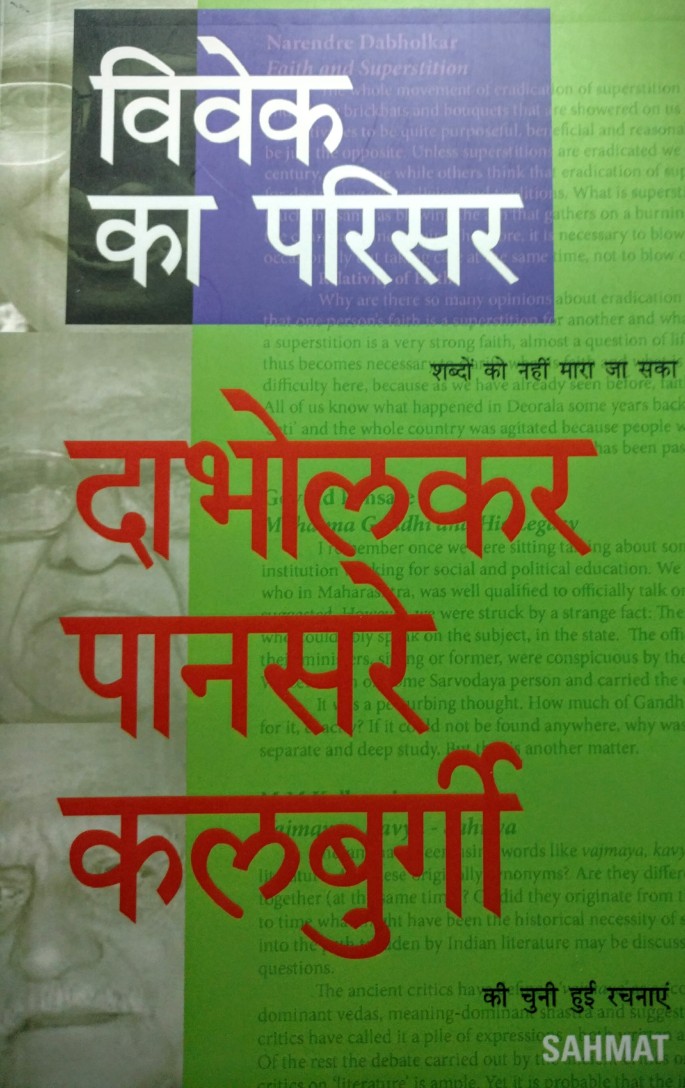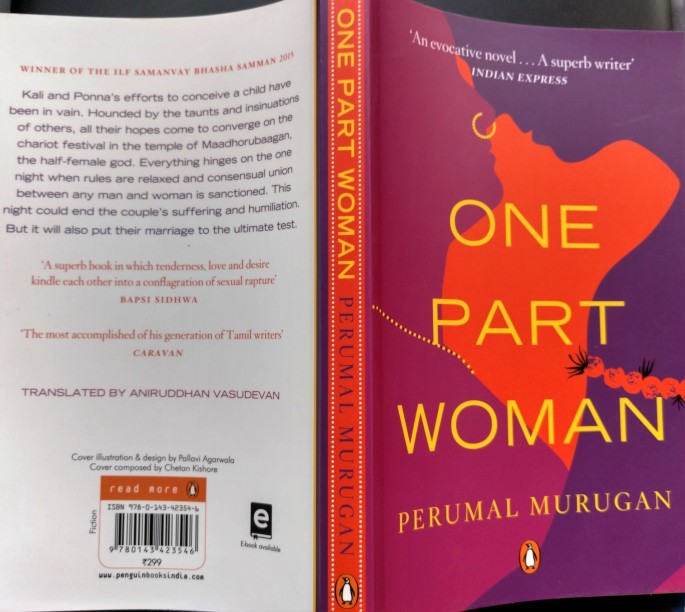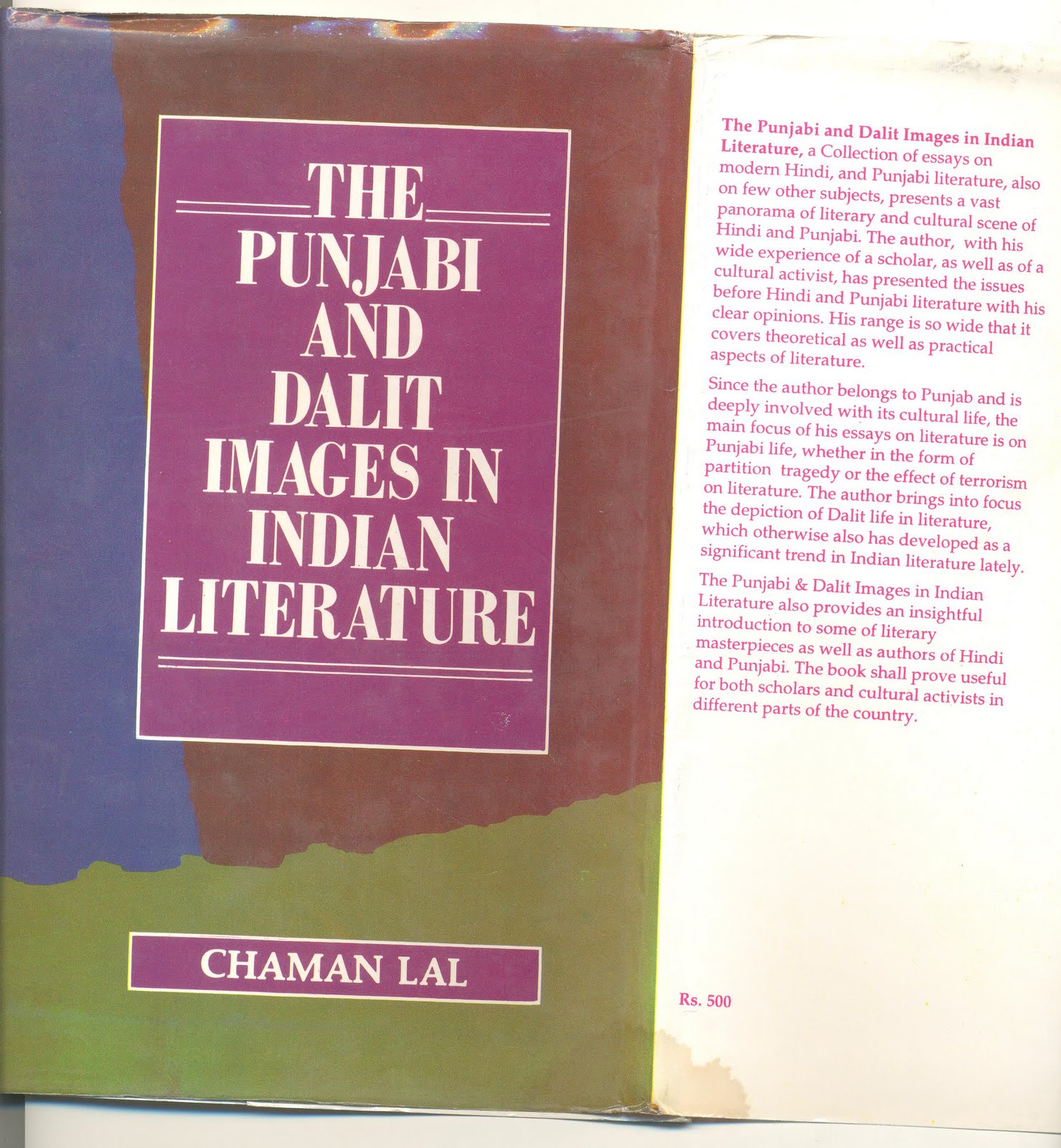Vivek ka Parisar(Hindi)-The Republic of reason, Selected writings of Dabholkar, pansare and kalburgi, Hindi translation-ramkishan gupta, Sahmat delhi, 2016, ist ed., pages134, price 120/ r

Dr. Narender Dabholkar, Comrade Govind Pansare and Prof. M M Kalburgi fell to the bullets of Hindutva terrorists during years 2013-15. Dr. Dabholkar on 19th August 2013 at Pune, Govind Pansare on 20th February 2015 at Kolhapur and Prof. M M Kalburgi on 30th Ausgust 2015 at Dharwas were shot dead in identical manner. While Dabholkar at the age of 65 years and Govine Pansare at the age of 82 years were shot dead during their morning walk; Prof. M M Kalburgi at the age of 77 was shot dead at his residence in Dharwad at the time of breakfast.
There has been massive protest by writers from all Indian languages after the assassination of Kalburgi and more than one hundred writers and other artists returned their various state awards, starting with Sahitya Akademi awards returned by nearly forty writers. Writers saw a pattern in these planned assassinations of these well-known personalities, who were actively resisting the rise of Hindutva fascist tendencies in the country by their rational and scientific tempered approach.
While Prof. M M Kalburgi, a former Vice Chancellor of Kannada University Hampi was a well-known Kannada scholar and author of many books of criticism in Kannada, others two were also well known for their writings in Marathi on rationality and history. To pay tributes to the departed souls, Sahmat brought out the collection of their selected writings in English and Hindi in 2016, as part of resistance movement against the forces who assassinated them.
In this collection there are five essays by Dabholkar, three by Pansare and four by Kalburgi. Apart from their writings Maharashtra CPM leader Ashok Dhawle, Megha Pansare-daughter in law of Govind Pansare and Dr. M S Ashadevi-a student of Kalburgi have paid tributes to them in their short writings/memoirs. Sahmat has its writing on killings of rationalist bloggers in Bangladesh included in the end of book and introduction is by eminent science writer Jayant Narlikar. Sahmat has underlined the purpose of bringing out this book as to promote the ideas of three martyrs of free thinking and rationality.
Jayant Narlikar in his brief foreword has remembered Jawaharlal Nehru for emphasising on scientific temper and opined that only scientific perception can eliminate blind faith and intolerance in society.
Ashok Dhawle in his tribute to Dabholkar has compared assassination of Dabholkar to earlier assassination of Communist MLA Krishna Desai in early 1970’s by Shiv Sena and noted the anger of common people at this dastardly act of Hindutva terrorists.
Megha Pansare in her personal memoir has noted that how Govind Pansare rose from the family of a daily wage rural labour and became a kind compassionate comrade and grandpa, who even after tragic death of his young son Avinash, took care of whole family.
Dr. M S Ashadevi has narrated how Prof. Kalburgi was a hard taskmaster to get his students work hard, as he himself was a disciplined scholar and researcher.
The first essay of Dabholkar is-‘Faith and Blind Faith’, in which author has underlined the perception of his organisation-‘AndhShradha Nirmulan Samiti’-Committee for eradication of blind faith’. Dr. Dabholkar has explained the difference between faith and blind faith. He tells the faith also to be relevant and explains difference between faith and trust. By simple examples, he tells how faith is formed and how there are difficulties in discerning between faith and blind faith. Most of such difficulties arise in the area of religious faiths. He supports the critical approach to analyse things and faiths. Some blind faiths get evaporated with time and development of scientific truths such as ‘Sun revolves around earth’! Dabholkar underlines four aspects to verify ‘faith’-To verify truth from facts, non-violence, to be dynamic and finally to make humans sublime. In second essay ‘Scientific Perception’, he begins with explaining the verification of evidence by way of observation, reason, guess and verification. He speaks in favour of ‘looking at the problem from all angles’ as a ‘correct attitude’. Dabholkar emphasis is on ‘self-control, Curiosity, humility and fearlessness as qualities of rational person.
Dabholkar in his third essay discusses-Why our society lacks scientific perception? He starts from family, which is autocratic, does not encourage the tendency to question among children, feudal attitude of patronising. In next essay rationalist Dabholkar focuses upon morality and blind faith. Moral values or moralism is projected as part of religious faith, which remains unquestioned, leading to feudal kind of loyality, which is detrimental to the growth of critical thinking.
Dabholkar finally comes to the issue of ‘Reason and scientific temper’, where he opines that blind faith has engulfed every aspect of our society, our writers, Universities are breeding ground for blind faith. He underlines that the relevant size of man’s brain, his power of pressing the thumb, his power of speaking and language has made man more powerful than other big and strong species. Though he acknowledges the contribution of ancient India in field of ayurved, mathematics etc.,, but he chides the kind of mythology being promoted as pusjpak viman, brahmastars etc.
Govind Pansare in his first essay ‘Mahatma Gandhi and his legacy’ underlines the irony that none in Congress party has any knowledge of Gandhi’s tradition and Sangh parivar trying to appropriate his legacy despite being killing him, is ironical. He tells us that there were seven murder attempts were made on Gandhi, including four alone by Godse, succeeding in his last attempt. In second essay Pansare discusses-What should be the approach of Communists towards religion?’ He explains the oft quoted Marx quotation-Religion is the opium of masses in its full text, whereas mostly the other part of quotation is left out. Marx describes religion as ‘sigh of the sufferer’ before terming it as ‘opium’ which helps the victim to bear the suffering of poverty. His third essay is –The thought of majority’ (Bahujan). He reminds the legacy of Dalit activist Vithhal Ramji Shinde, whose contribution to Dalit awakening is ignored.
Kalburgi’s four essays are on literature. The first one analysing difference between Writing, poetry and literature. In second important essay he discusses ‘literature as collective property, partly as individual possession’. Third is ‘Riti sahitya aur Lok sahitya’-the ornamental literature and people’s literature, favouring the later. His fourth and last essay is somewhat technical-‘The structure of research’. It is like a teacher’s lecture to his research students, in which he explains the various aspects and process of research work.
All three martyrs were known masters of their respective fields. In this selection only a small part of their writings are presented in order to make readers aware of their talent and how Hindutva terrorists had silenced that talent brutally. Yet they could not crush their ideas, which live in more strength through their writings now reaching more people through translations.
Sahmat Delhi has done well to bring out his collection to perpetuate and promote their ideas, sought to be crushed by physically silencing them by anti-human forces of our society.
In Dark Times: Voices against Intolerance, Sahmat Delhi, 2016 ed., pages 152, price 150/ rupees

Eminent economist from JNU Prof. Prabhat Patnaik has put up small introduction to this collection of documents from protesting writers/artists and scholars after the assassination of Prof. M M Kalburgi in Dharwad in Karnatka on 30th August 2015. Starting from Udai Prakash it continues till today. This collection has statements from various groups of historians, scientists and individual writer’s statements, while returning their awards. Sahmat has made good collection of documents and also includes many reports from media a kind of exhibitor of protest.
“Pratirodh’(Hindi), ed. Mrityunjay, Navarun Ghaziabad, 2016, pages 128, price 100/ rupees

This collection is focused on resistance of Indian writers/artists to the prevailing atmosphere in the country created by present government in the name of Hindutva. Terrorising minorities in the name of beef, abusing writers for returning awards in protest against such atmosphere is the hallmark of present regime. This collection includes the writers protest letters on returning their awards since September 2015. About forty writers returned Sahitya Akademi awards, which remained big news, but it is more than 130 writers/artists and others who had returned awards. This book has collected 117 names, but list has not concluded yet. It is good collection in Hindi of resistance movement, unique in nature. Young Hindi scholar Mrityunjay has edited this important collection.
One Part Woman (novel), Perumal Murugan, Translation Anirudh Vasudevan, Penguins India Delhi, 2014 ed, pages 240, price 299/ rupees

This is one of controversial novels of Tamil writer Perumal Murugan, which made him suffer a lot at the hands of high caste Hindutvaites in Tamilnadu. Published in 2010 in Tamil and 2014 in English, this novel is based on rather unusual theme of a childless mother who is in deep love with her husband, but goes for a night on religious function, where in dark men and women meet freely mostly for this purpose to get pregnant, which they are not able to get from their husbands. Such practices are not uncommon in many societies and even in Mahabharta times-Pandu, the father of Pandvas was considered weak and Kunti got her sons from different mates!
240 pages novel divided in 34 chapters begins with hero Kali visiting his in laws. Ponna his wife was sister of his friend Muthu. They were too passionate in their love making but Ponna was not conceiving and in her worry she would ask Kali in intimate moments, if he would marry another woman for child! Kali’s great grandfather was Nachimuthu. There was a chariot festival every year in the temple of Maadhourbaagan-the half female god in their area. Here the childless women used to go looking for a mate to get conceived later. Kali and Muthu in their early youth had been going there to ‘enjoy’! But when elder women of two families started thinking of sending Poona there, as Kali was not inclined to marry again, he was so much in love with Ponna; Kali started getting agitated and upset at the very idea. Ponna’s sense of achieving motherhood was also asserting. Elder women of the family finally plan it without making Kali know it, as he was too much resisting the very idea. Ponna goes and finds a soft youth for mating. Novel ends with Kali yelling as Ponna being ‘whore’ after consuming lot of ‘arrack’! There are details of life an story line of novel, which makes an interesting read, but the controversy was centred on why this ‘practice’ has been depicted in novel, which according to the so called leaders of this particular community was ‘insulting’! The novel is good in fictional art, but may not have got this much attention, had the totally unnecessary controversy has not erupted. The so called ‘protectors of social mores’ have created a hell for creative writers in India by their illiterate intolerance towards any art. Perumal Murugan at one time was made to declare the death of his ‘writer’ and only recently he has revived himself as a ‘poet’, an understandable creativity after such shocks in life. The novel is worth reading to know many cultural traits of South India.

